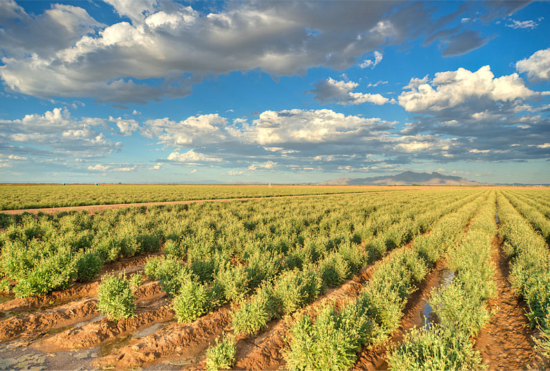Bridgestone to commercialise guayule by 2030
 Up to 25,000 additional acres of guayule farmland will aid Bridgestone’s expansion plans (Photo: Bridgestone)
Up to 25,000 additional acres of guayule farmland will aid Bridgestone’s expansion plans (Photo: Bridgestone)
With an additional US$42 million investment, Bridgestone Americas plans to commercialise its activities with guayule, a desert shrub that offers an alternative source of natural rubber. The aim is sustainable commercial production of guayule-derived natural rubber by the end of the decade, and in the years to 2030 it will partner with farmers in the USA and Native American tribes to increase capacity by up to 25,000 additional acres (10,100 hectares) of farmland for planting and harvesting guayule at scale.
“We’re extremely bullish on the potential for guayule as a domestic source of strategically critical materials, such as rubber, hypoallergenic latex, building material adhesives and renewable fuel, just to name a few. We’re thrilled to be taking this major step toward commercialisation before the end of the decade,” said Nizar Trigui, chief technology officer and group president of Bridgestone Americas’ Solutions Businesses, “With guayule, we can reduce the environmental impacts that come with overseas sourcing while also realising a more sustainable agricultural system for parts of this country that are facing persistent and worsening climate conditions, so it’s really something with many benefits for our environment and our economy.”
Guayule & Bridgestone
Guayule is a heat tolerant, woody shrub that thrives in desert settings, particularly in America’s desert southwest. It can be farmed with existing row-crop equipment, saving costs for farmers, and requires as little as half the water to grow as existing crops, such as cotton and alfalfa.
Bridgestone launched its guayule research initiative in 2012, when it broke ground on a processing and research centre in Mesa, Arizona. Today, the company operates the research centre in Mesa and a 281-acre guayule farm in Eloy, Arizona. Bridgestone has invested more than $100 million in its efforts to commercialise guayule, achieving major milestones such as producing the first tyre made from guayule-derived natural rubber in 2015, and continued expansion of its guayule molecular breeding programme. Bridgestone is also the recipient of multiple U.S. government research grants for guayule research and development, including from the U.S. Department of Agriculture (July 2017) and from the U.S. Department of Energy (DOE) Joint Genome Institute (September 2021).
Farm to Racetrack
At present, Bridgestone is expanding the number of local farmers it works with in Central Arizona and is targeting 350 new acres of guayule to be planted this coming year. The conversion to less water-intensive crops is a direct result of Bridgestone’s agreement with the Environmental Defense Fund (EDF), an NGO actively involved in water shortage solutions for the Colorado River, which is used for irrigation in Central Arizona.
To demonstrate the performance of guayule, Bridgestone has taken it racing. Firestone Firehawk race tyres made with guayule-derived natural rubber in the sidewall were introduced at the Indy 500 Pit Stop Challenge in May prior to making a full competition debut as the alternate race tyre at the Big Machine Music City Grand Prix on 7 August. This first-ever use of guayule-derived natural rubber served to demonstrate both the safety and performance of the material in the crucible of a high-speed, high-stress performance environment, with racing action up to speeds of 200 mph.
Expanding in Arizona
The guayule initiative aligns with the ‘Ecology’ and ‘Energy’ aspects of the Bridgestone E8 Commitment and is part of the Bridgestone plan to achieve carbon neutrality and make tyres from 100 per cent renewable materials by 2050. The company is actively researching a range of solutions to support the recycling of materials from end-of-life tyres and promote the replacement of non-renewable materials such as oil, silica and virgin carbon black in new tyres.




Comments